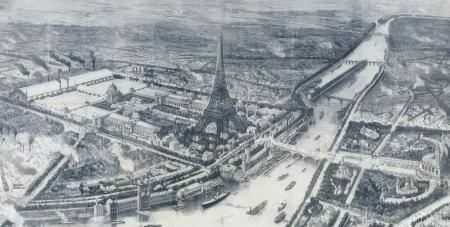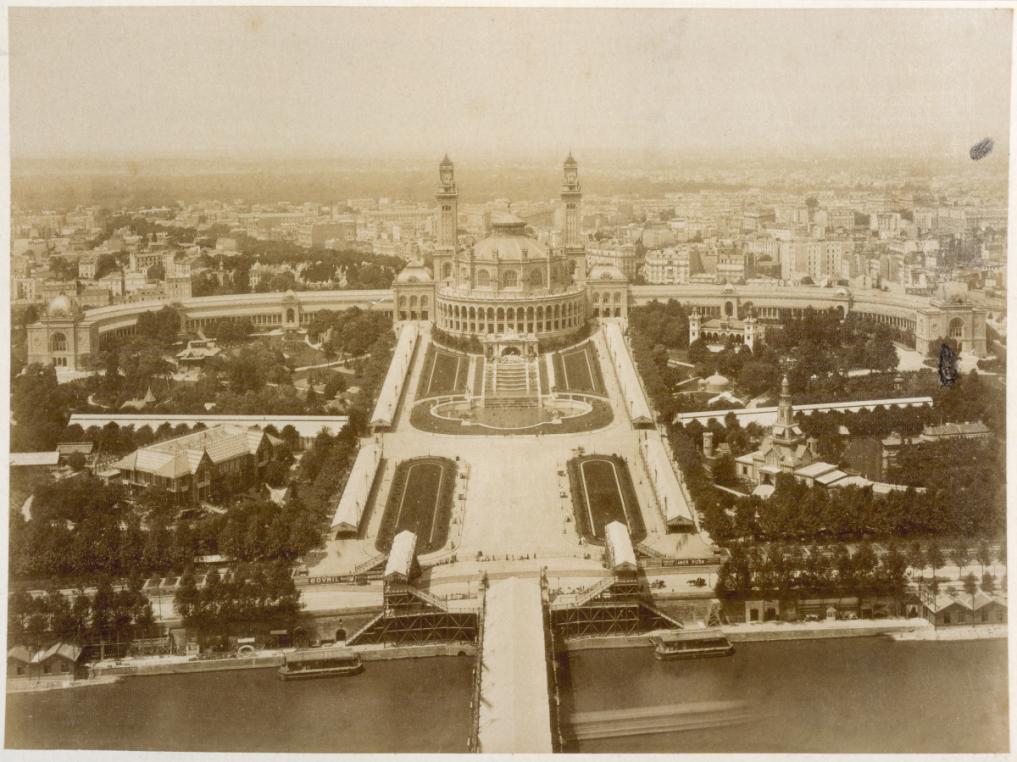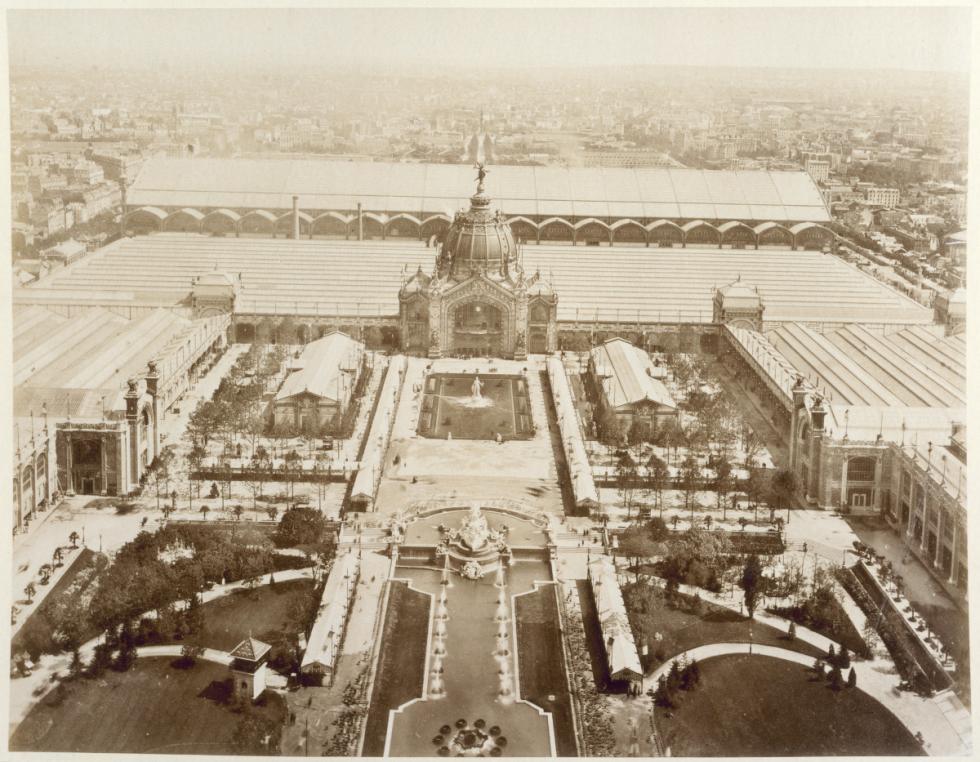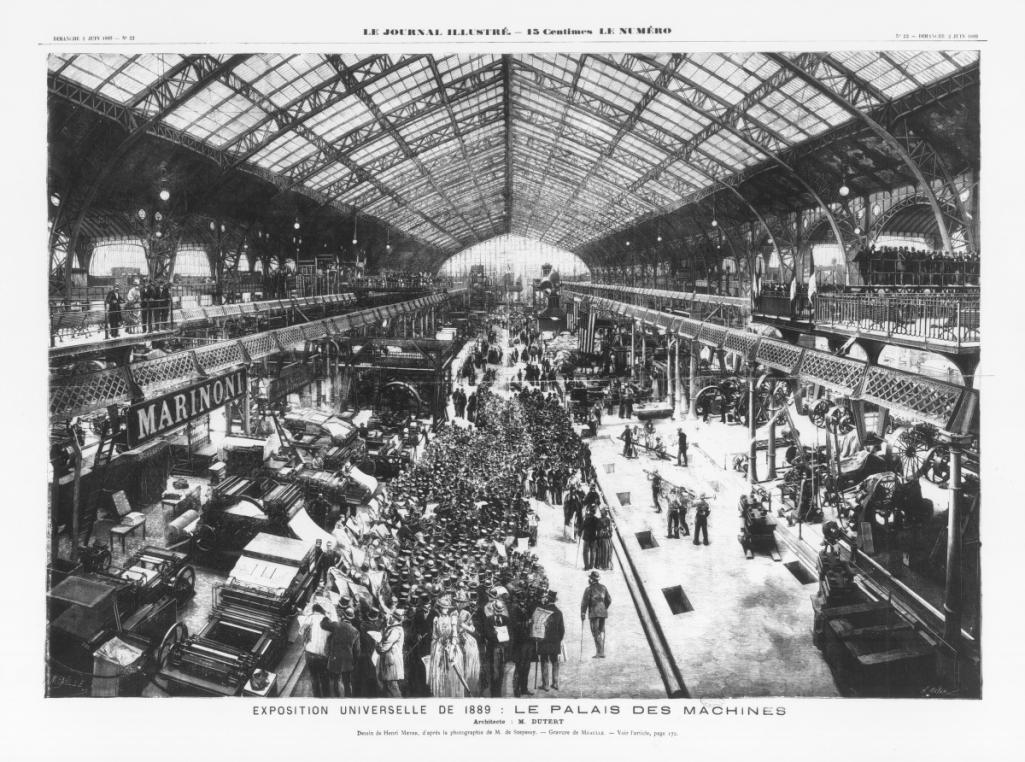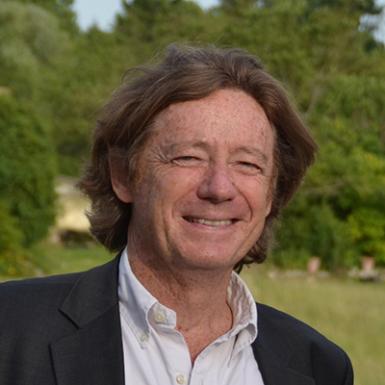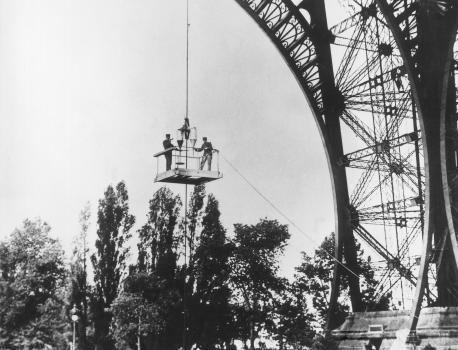In 1851, London launched the era of international exhibitions in a spectacular way, with an immense and unique prefabricated building made of iron, wood, and glass. France responded swiftly, because something about these exhibitions always stirs up national pride. In 1855, a large palace with a stone facade and vaults of cast iron and glass was built on the Champs-Élysées in Paris. At the height of the Second Empire, in 1867, a gigantic oval building that covered a large part of the Champ de Mars was completed by small pavilions tucked into a peripheral garden.
Trocadéro and Champ de Mars, the exhibition venues
In 1878, Trocadero Palace was erected on Chaillot hill, it’s two huge wings encircling a concert hall that contained 4,600 seats. At the same time, the Champ de Mars saw the construction of a series of minutely designed glass galleries with no particular monumental effect, except for the quadrilateral angles of the pavilions.
The 1889 World’s Fair took on a whole new dimension. It celebrated the 100th anniversary of the French Revolution as well as the strength of national industry, under the auspices of the Republic and its colonial empire, which had closed the gap with England. Covering an area of 125 acres, it copied the typology of the previous exhibition (in 1878), with galleries occupying part of the Champ de Mars, crowned with monumental domes, and pavilions scattered throughout the gardens. Only about thirty of these were national pavilions, and there was a strong American presence because the European monarchies boycotted the event.
It also celebrated two technological feats of metalwork: the world's largest building, the Galerie des Machines, which covered an area of 420 by 110 meters with no internal supports, and the world's tallest tower. These two structures were intended to outlive the fair, but the Galerie was dismantled in 1909 because no sustainable use for it was found, and the Tower was of course preserved through the efforts of its builder, Gustave Eiffel.
32 million visitors!
Other pavilions were dismantled and reconstructed. In total, the exhibition welcomed more than 32 million visitors over six months, of which only two million ascended the Eiffel Tower, with a record of 400,000 in a single day. Admission to the World’s Fair cost one franc, but you had to pay an additional five francs to climb the Tower. Some 61,000 exhibitors, more than half of whom were French, presented artistic and industrial products.
Although few traces remain apart from the Eiffel Tower, the 1889 exhibition was undoubtedly one of the most spectacular of its time, inviting the general public to discover new inventions that would have a huge impact on the future, like electricity and the telephone. All this was presented in a stunning panorama where the ruggedness of the metal frameworks was tempered by the ceramics, terracotta and stained glass which adorned the walls of the buildings.
Star of the Show at the 1889 World Exhibition
The tenth World Exhibition opened in Paris on May 15, 1889 and ran until November 6, 1889. It commemorated the 100th anniversary of the French Revolution and was centered on iron, steel and industry! The Exhibition covered 235 acres across the Champ de Mars, the hill of the Trocadéro and the quayside as far as the esplanade at Les Invalides.
At the Champ de Mars, the Galerie des Machines pavilion was Europe’s largest metal structure. It was also a testament to the advent of electricity. But the real highlight of the Exhibition was Gustave Eiffel’s tower. It stunned the entire world with its height of 1,024 feet, making it the tallest Tower in the world at that time. Almost two million visitors flocked there during the Exhibition. Just imagine: for the first time ever, people could feel the thrill of the climb and look out over Paris! All the structures built for the World Exhibition were taken down over the next few years or decades… Except the Eiffel Tower!
Bertrand Lemoine is an architect, engineer and historian. He was a research director at the CNRS and general manager of the Atelier International du Grand Paris. He is an internationally recognized specialist in the history and current events of architecture, construction, the city and heritage in the 19th and 20th centuries, particularly in Paris, Greater Paris and the Eiffel Tower. He is the author of forty-three books and several hundred articles on these subjects. He is currently a consultant on architectural, urban, digital and energy issues.

